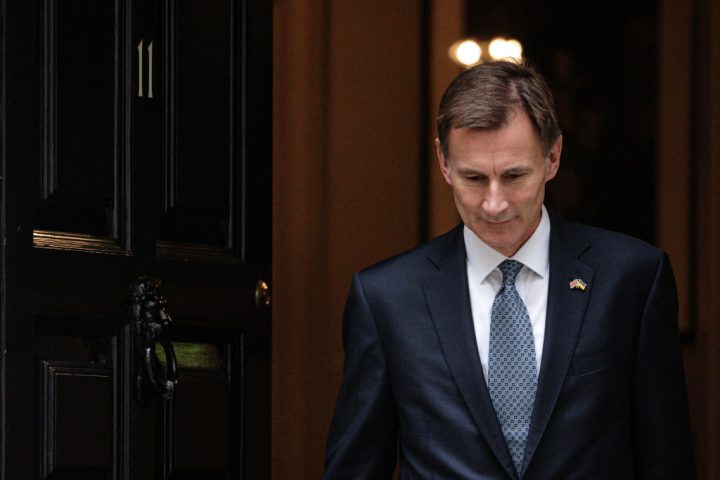The UK economy shrank by 0.3 per cent in March, as ongoing strike action continued to take its toll. But the fall wasn’t enough to push the UK into recession territory, as the Office for National Statistics announced this morning that the economy grew by 0.1 per cent in the first three months of the year. This was thanks to stronger-than-expected growth in January (which was then followed by zero growth in February).
Do today’s updates paint an optimistic or pessimistic picture for the UK economy? While the risk of entering formal recession has been dodged once again, today’s news highlights just how stagnant the UK economy has become. We are years on from the peak of the Covid crisis now, yet quarterly GDP is still 0.5 per cent below its pre-pandemic levels (the last normal quarter being Q4 2019).
January’s growth figures are beginning to look like the exception to the rule. March’s GDP update was much worse than expected, as services contracted by 0.5 per cent: a sign of inflation (and the Bank’s attempts to combat it) taking its toll.
There are glimpses of good news in today’s report. Production output had its strongest showing since May 2021, growing at 0.7 per cent. Construction volume also increased by 2 per cent, as increases in new work (growing at 0.7 per cent) helped to offset a fall in repair and maintenance (contracting 0.6 per cent). A decrease in repair and maintenance also hurt the services sector, which saw its ‘wholesale and retail trade; repair of motor vehicles and motorcycles’ sector decrease most dramatically, at 1.4 per cent.
Breaking it down further, consumer-facing services also took a big hit, falling by 0.8 per cent – evidence that workers are feeling the impact of inflation on real wages. People are starting to feel those interest rate hikes, which take longer to feed into the system, but have been pushed up by the Bank deliberately to take some heat out of the economy and dampen economic activity.
These GDP updates come just one day after the Bank of England published its revised growth forecasts, while hiking interest rates for the 12th consecutive time. Speaking to CNBC after the announcement, the Bank’s governor Andrew Bailey described the growth revisions as possibly the ‘biggest upgrade in its history,’ nothing however that the projections for growth were ‘still quite low though, let’s be honest’.
Today’s numbers match this narrative rather well: virtually no growth is better than an economic contraction, but it’s not exactly good news. To be fair, the Bank expects a more difficult first half of 2023, with the potential for a better end to the year. But the ‘anecdotal evidence’ reported to the ONS suggests ‘that industrial action in March 2023 had a notable impact on different industries of varying degrees’. With roughly one in ten businesses affected by the strikes, growth figures in Q2 may prove just as dicey – and there’s no guarantee industrial action will wind down by the summer.
And what do today’s figures mean for the government’s key pledge to ‘grow the economy’ this year? That promise in January was kept so vague that today’s news about Q1 technically meets the criteria. But will anyone be convinced that the 0.1 per cent growth is really making good on that promise, or that it is ‘creating better-paid jobs and opportunity right across the country,’ as promised?
Probably not.







Comments